
Plant a pip, and you hope that it will grow. It will, in time, establish roots and shoot upwards, growing in depth while it reaches up to the light. It is how all stories must work. We begin at a point that is presented to us as the beginning, but which we soon learn is some middle point. We come to learn of the past events that got us to this point, as we follow where events will take us. All that is required to germinate the process is the reader, us.
It seems no accident that Charles Dickens named the hero of his great novel, Great Expectations, Pip. Philip Pirrip, known only as Pip, is the seed from which the story grows, one where how he climbs towards the sun is rooted in a past from which he needs to learn. Moreover, it is a novel set deeply in the Kent countryside, the fruitful county. Dickens makes no direct mention of the metaphor, but in the vivid opening scene in which Pip encounters the escaped convict, Magwitch, the latter looks upon him as something edible:
“You young dog,” said the man, licking his lips, “what fat cheeks you ha’ got.”
I believe they were fat, though I was at that time undersized for my years, and not strong.
“Darn me if I couldn’t eat ’em,” said the man, with a threatening shake of his head, “and if I han’t half a mind to’t!”
Making Pip’s edible nature all the clearer, he goes on to threaten that his heart and liver could be torn open, roasted and eaten, either by Magwitch or by his still more terrible fellow convict, Compeyson.
The Hoo peninsula, inspiration for the early scenes in the novel, has its fruit orchards, but Dickens’s interest is focussed on its northern edge, where there are few trees, only long stretches of marshlands that fringe the Thames estuary. Pip’s view of his surroundings from the churchyard places himself as one small being among the elemental things, out of which the seed has somehow to grow:
…the dark flat wilderness beyond the churchyard, intersected with dikes and mounds and gates, with scattered cattle feeding on it, was the marshes; and that the low leaden line beyond was the river; and that the distant savage lair from which the wind was rushing was the sea; and that the small bundle of shivers growing afraid of it all and beginning to cry, was Pip.

The marshlands of Hoo look much as they must have done in Dickens’s time. Little can be built on them; they can only be what they are. There is an unremitting, elemental flatness to the place. Everything feels stripped back, raw. The low fields are intersected by dikes, fences and occasional paths, so there something to alleviate the sense of absence, but it is all a maze, guiding you nowhere. The skies complement the greyness, streaks of cloud through the morning mist that haunt the mind of the solitary traveller.
The particular quality of flat lands mirrored by grey skies is captured well in the 1946 film of Great Expectations, directed by David Lean. It’s remarkable to think of a film production crew coming to this deserted corner of the country, whose busy industry aimed to recreate that sense of a lost place that they would have so effectively disturbed. The production team spent two months in the area (over September-November 1945), before returning to the studio in Denham. They set up location at St Mary’s Bay, at the centre of the northern end of Hoo, their equipment being transported there by sea using an invasion craft provided by the Admiralty. The production constructed Joe Gargery’s forge there (based on an actual forge building they located at Chalk, near Gravesend, which still exists) and the Ship Inn, which features in the failed attempt by Pip and Herbert Pocket to engineer Magwitch’s escape by a packet-boat. Other Hoo locations used were Colemouth Creek, on the eastern end of the peninsula, and Darnett Ness Island in the Medway estuary, used for the scene where Magwitch wrestles with Compeyson (known only as Convict in the film’s credits) in the mud.
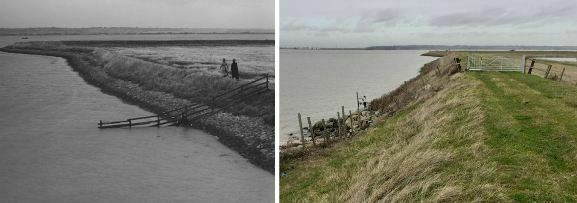
Wandering through the area, one can find locations that clearly feature in the film, though the general featureless of the area means that one bay, dike or flat piece of marshland looks much like another. This generic impression of the marshes is what designer John Bryan and cinematographer Guy Green express so well. It is a land of the fevered imagination, where signposts and a sense of direction have gone, and we find ourselves anchored to nowhere. This is reflected in the skies, which capture the unearthly look of the streaky cloudscapes one may encounter on a cold January, though for the most part they used glass shots – that is, painted skies. The film’s opening scenes are a peculiar mixture of location and studio, reducing somewhere to anywhere. The very start of the film has Pip running past gallows along the dike at what is probably St Mary’s Bay, actuality on the lower half of the image, artificial mood skies above (in reality the sky had been bright blue). It establishes the thematic visuals from the outset. Here there is no separating the real from the unreal.

It was not an easy shoot. The weather alternated between clear skies with still waters (“too much like a picnic” notes the Kinematograph Weekly) and ideal clouds brought in with the breeze, to heavy gales with only a few snatches of filming possible. The weather, and with it the variable light, made the matching of shots difficult.
In his biography of David Lean, Kevin Brownlow provides the surprise information that the original cinematographer, Robert Krasker, with whom Lean had worked so successfully on Brief Encounter, was fired when Lean saw the initial rushes. The results were “flat and uninteresting”, lacking in “guts” (Lean’s words). They had nothing of the Expressionist look Lean sought (Krasker would go on to redeem himself emphatically as an Expressionist cinematographer on The Third Man). Guy Green was brought it to achieve the effect that Lean needed, guided by Bryan’s designs, which was to uncover the hallucinatory effect of the place, not its literal impression. What drove this was not simply the impression of the marshes that Dickens’s text gave, but a desire to bring to life the novel’s fairy tale premise.
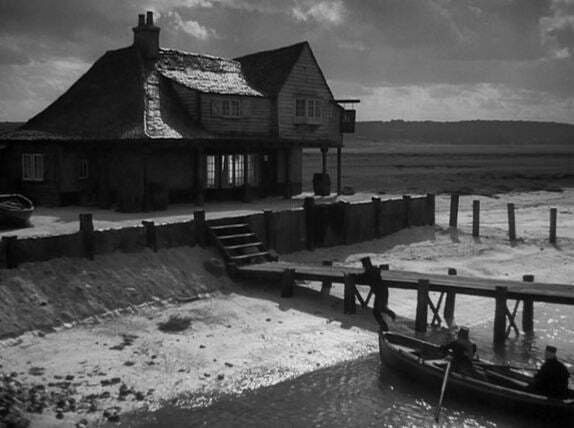
In production notes for the film, cited by Joss Marsh in her fine essay on the film for The Cambridge Companion to Charles Dickens, it is stated that the intention was to put “ordinary human people into a fairy-tale story and background”. Marsh adds that it was “precisely this doubled effect of the stylized and brutishly real” that the filmmakers set out to achieve, through a mixture of innovative techniques, from forced perspectives learned from 1920s German Expressionist films, to the use of ‘cloud glass’ (a white backcloth with clouds painted on a sheet of glass projected by arc light onto the cloth) to create the sky effects true to the look required. They sought, and realised, a kind of hyper-reality that suited the elemental qualities of the fairy tale technique.
Dickens had a deep love of fairy tales from his childhood. Whether he was aware of their influence on his literature, specifically in terms of a conscious knowledge of fairy-tale technique, seems down to conjecture, but the influence is undoubtedly there – not just in narrative form, but in emotional effect and morality, such as could trigger a strong response in his audience. Both Dickens and his readers had within them conceptions of literature moulded by childhood stories that strongly influenced writing and reading respectively.
Iona and Peter Opie, in The Classic Fairy Tales, state that a true fairy tale is not about dreams coming true but of “reality made evident”:
… the magic in the tales (if magic is what it is) lies in people and creatures being shown to be what they really are. The beggar woman at the well is really a fairy, the beast in ‘Beauty and the Beast’ is really a monarch, the frog is a handsome prince, the corpse of Snow White a living princess. Fairy tales are unlike popular romances in that they are seldom the enactments of dream-wishes … Enchantment, in practice, is the opposite to the golden dream. The wonderful happens, the lover is recognized, the spell of misfortune is broken, when the situation that already exists is utterly accepted, when additional tasks or disappointments are boldly faced, when poverty is seen to be of no consequence, when unfairness is borne without indignation, when the loathsome is loved.
It is not hard to see how Great Expectations fits into such an ethical framework. Pip learns that life is not a popular romance, but requires acceptance of its realities before any rewards (his true great expectations). The spell that he casts over himself is only broken by his selfless love for Herbert, Magwitch and Estella, in each of their own calamities.
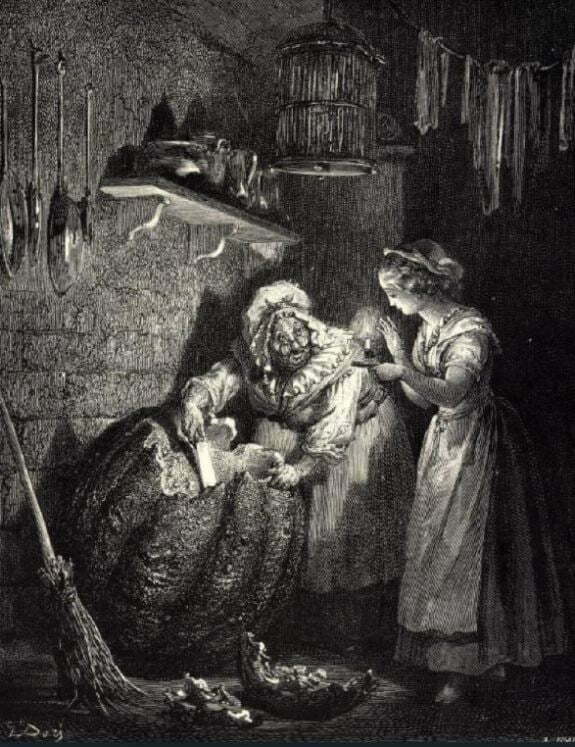
Pip alone feels like the starting point to a common feature in fairy tales, the youngest child or orphan. The novel starts with him observing the five lozenge-shaped tombstones of his brothers, all of whom died young (“who gave up trying to get a living, exceedingly early in that universal struggle”). His mother and father are dead too, and it is by their tombstone that Pip encounters Magwitch and the seed for the story is sown. More specifically though, numerous commentators have noted the affinity Great Expectations has to the story of Cinderella. Claire Tomalin, in Charles Dickens: A Life, calls the novel “not a realistic account of how the world was but a visionary novel, close to ballad or folktale. The orphan boy, with dead parents and siblings in the graveyard in the marsh, has a cruel elder sister who treats him like a male Cinderella”. In his introduction to a Penguin Classic edition of the novel, Angus Calder goes further:
It is a kind of inverted Cinderella, where the ugly sister, Joe and Magwitch, are in the right, the fairy godmother, Miss Havisham, is a witch after all, and the princess, Estella, is a gleaming fake.
But one can see still more to the relationship than this. Great Expectations the novel is, structurally, a dual-Cinderella. There are two Cinderella-figures, both of whom confront characters with parallels in the fairy tale, and need to determine their true nature. The first is Pip. As Cinderella comes out of ashes, he comes out of marsh and mist. Like Cinderella he is a drudge, but one who must break out of his drudgery (it is an essential element of the fairy tale, in many of its variants, that Cinderella is not a menial but a princess in disguise, who must be returned to her true nature, for such is the law of things). His two ugly sisters are Joe and Mrs Joe. One is obviously an ugly sister (Mrs Gargery is Pip’s sister), and the other one not, but in his snobbishness Pip comes to reject Joe as such too. But there is only the one ‘ugly sister’, because what Dickens does repeatedly is to set up two characters, seemingly sharing the same role, and Cinderella must ultimately learn which is which. Joe Gargery is no ugly sister – he is the gentleman Pip wants to be.

Another such pairing is Pip’s fairy godmother. He has two – Miss Havisham (false) and Magwitch (true). Only after he has been through his ordeal can Pip tell which is which. How fascinating it is to look into the roots of the Cinderella legend, which identify the magical figure who brings about transformation, eventually transformed in Perrault’s version into a ‘fairy godmother’, as the spirit of the child’s dead mother – then to remember that when Pip first encounters Magwitch it is at the graveside of his mother (and father).
Miss Havisham is not the fairy godmother. She is the royal personage who has put on the ball to find a suitor for the prince. Again there are two figures from which Pip has to choose – Estella or Biddy. But which is the true and which false? Estella is ostensibly the latter, but can any reader believe that Pip was ever in love with Biddy? Dickens, I think, plays a double-bluff on his readers, and that Estella is Pip’s true reward. The happy ending, where Pip and Estella come together, was not Dickens’s original choice, but one that he was persuaded to adopt by his writer friend Edward Bulwer-Lytton. In fairy-tale terms Bulwer-Lytton was right (or can be argued to have been right, as few literary critics have agreed). Equally so, therefore, was David Lean and his scriptwriters in choosing that one of the two possible endings (ironically, much like one of Pip’s binary choices). Cinderella, having been through her trials, must gain her reward.
The other Cinderella figure is Estella. She too is born into drudgery in Newgate but will come to her own great expectations. She has two fairy godmothers – the same as Pip’s, Magwitch and Miss Havisham, with Magwitch the true spirit (or in this case the living actuality) of the lost father. Her ugly sisters are Compeyson and Arthur (his co-conspirator and Miss Havisham’s half-brother), though both turn out to be as ugly as the other. Her two princes are Pip and the unspeakable Drummle. She picks the latter, until Dickens chooses to rescue her and deliver her true reward in Pip.
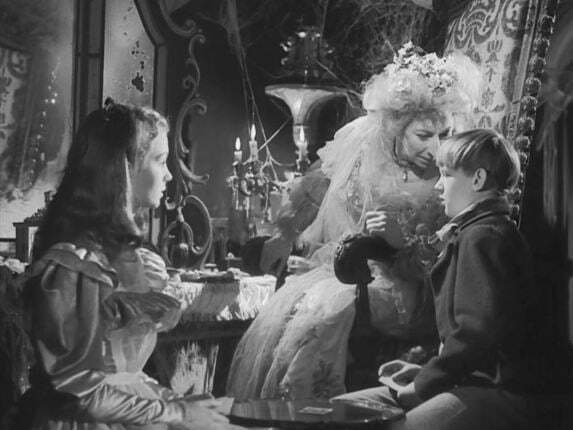
There is nothing to indicate that any of these Cinderella parallels were intended by Dickens. The novel is far too complex and driven by many narrative and thematic ideas for that. But there is little denying that there is a fit, because the basic morality on which he based his novel is that which he had inherited from childhood fairy tales, which were in turn grounded in understood truths of life. Cinderella’s situation is universal. No matter how interchangeable the characters may be, the plot remains the same. It is no accident that the tale and the novel are so alike, for they arise out of the same philosophy.
A story that stats in the graveyard of a church has its Christian implications, and likewise Cinderella. The Opies point to the kinship between the fairy tale and the Christ tale:
… the prince’s admiration of her in her party dress is worthless. It is essential he plights himself to her while she is a kitchen maid, or the spell can never be broken; and in this a curious parallel to the Christ story is apparent. The man of perfect heart, living in the guise of a poor carpenter’s son, has to be accepted in his lowly state … Had Christ been shown in his full glory, recognition of his virtues, whether by pauper or by prince, would have been valueless.
Dickens was probably more aware of the Christ parallel than that of Cinderella, but both share the same pattern, again arising out of the same philosophy.

Not all of this is in Lean’s film, inevitably. The film’s greatest innovation may have been in its faithfulness to the novel’s impression on the mind rather than the details of its construction. Many characters and incidents had to be dropped, not simply for reasons of time but because they did not serve the core story. Biddy and Drummle are there, but are incidental – Biddy marries Joe without any suggestion of Pip having feelings for her; Drummle’s dreadfulness we have to take on trust. The film also adds to Dickens, most famously in the ending (scripted by Kay Walsh) where Pip encounters Estella at Satis House, in the process of ossifying herself into another Miss Havisham. This triggers his dramatic pulling down of the curtains to let in the light, into which they walk together.
But the fairy tale remains – simplified to its elementals, but no less true. It is impossible that Lean and his collaborators considered a dual Cinderella theme, any more that did Dickens (consciously at least). It is not even certain that they thought of Cinderella. They thought of the fairy tale method rather than the specifics, a way of placing fundamental human dilemmas through a mixture of reality and fantasy. The morality is consistent as well: Great Expectations the film, as with Great Expectations the novel, as with the fairy tale both instinctively followed, is about “reality made evident” and the need to learn what is real, and true. This particular quality the filmmakers sensed in Dickens novel and then found the means to realise it in the same locations as inspired the writer. Not just the look of the places, but how they played upon the imagination, how they inspired a particular kind of story.
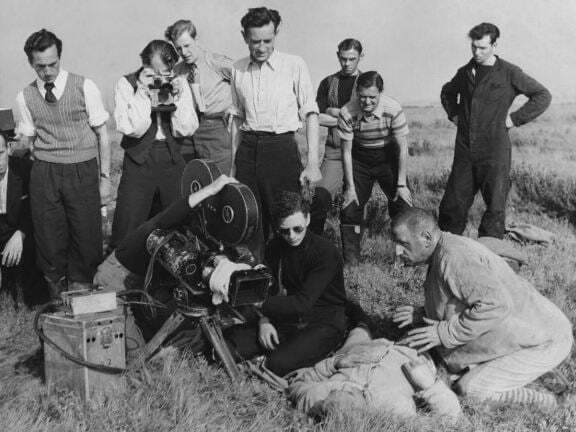
To be here, in the places where Dickens grew up, turned over in his imagination repeatedly, and then returned to at the end of this days, is to see story everywhere. It is there in Satis House (a re-imagined Restoration House, still standing in the centre of Rochester); in the coaching inn the Blue Boar where Pip sets out for London (a re-imagined Royal Victoria and Bull Hotel, which still stands and serves), and where Lean and his crew stayed while filming; in the row of children’s graves at Cooling believed to have inspired the novel’s opening; in Hoo’s grey skies, flat marshes and deserted St Mary’s Bay, offering safe harbour to no one, on the edge of a little world. It all went on, and goes on still. Novel and film, novelist and filmmakers, true and painted skies, location and studio, the real and the visionary, meaning and feeling – and out of the mist a story emerges, ripe for the re-telling.
Links:
- All frame stills from the 1946 film of Great Expectations come from the ITV DVD, from the BFI National Archive restoration
- Joss Marsh’s essay ‘Dickens and Film’ in The Cambridge Companion to Charles Dickens and Kevin Brownlow’s David Lean were useful in putting this post together, as were local newspaper reference on the British Newspaper Archive
- Equally useful was Iona and Peter Opie’s The Classic Fairy Tales
- The Kent Film Office has general information on the locations of film versions of Great Expectations
- William Atkins’ essay for the New York Times, ‘Pip and Me: A Journey Into the World of “Great Expectations”‘ explores the ‘formative realm’ of the Hoo peninsula
I’m surprised the contrast between Estella and Cinderella is not more widely appreciated. It only occurred to me recently in a discussion with my niece, decades after I read the book, and when the 37% rotten tomatoes Gweneth Paltrow film is more fresh in my mind than anything else, and still a vague memory. Thanks for this piece to remind me of the story.